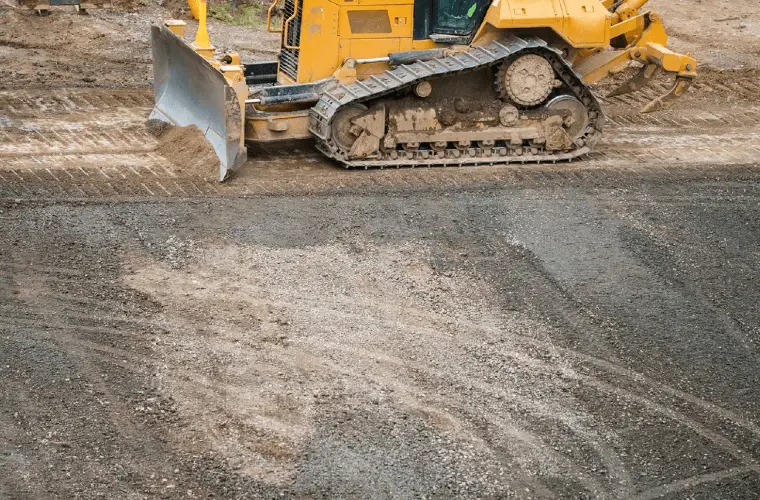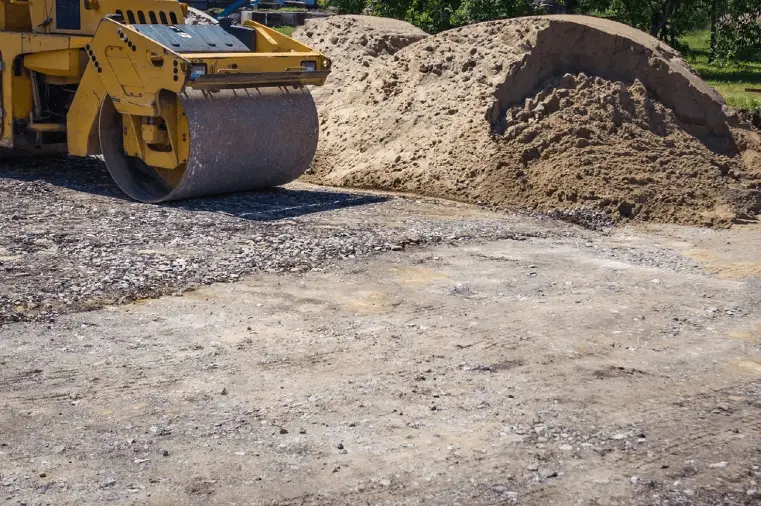What is the Method Statement for Select Fill Placement?
A method statement for select fill placement outlines the systematic approach and procedures for the proper placement of select fill material in construction projects.
Purpose
In order to ensure the safe and compliant execution of the placement of select fill material and related activities as per the contract requirements, as well as the implementation of systematic quality assurance and control activities, thorough inspections are conducted to verify and document conformance.
Table of Contents
Scope of Work
This method encompasses the various tasks associated with the project titled “New 2k Runway – Main Runway Works” under the contract number NRTW-1008-CN.
Definitions
CM Construction Manager
PE Project Engineer
SE Site Engineer
CS Chief Surveyor
ME Material Engineer
ES&H Environmental, Safety, and Health
References
Civil Specifications
General and Topographic Survey
Civil, Mechanical, and Navaids
Surface Profiles and Pavement
Materials
Warning tapes
Temporary signs
Safety Barriers
Roadway plastic cones
Grade Stakes
Plant and Machinery
Grader
Bulldozer
Wheel loader
Vibrating rollers
Dump trucks
Water tankers
Plate compactors
Tower lights

Health, Safety & Environment
Construction sites present unique health and safety challenges. Identifying potential hazards and risks associated with select fill activities is crucial to ensure the well-being of workers and the general public. Emphasize the implementation of relevant safety measures, including the use of personal protective equipment (PPE) and safe work practices. Adequate training, regular safety inspections, and emergency response protocols should be incorporated into the method statement.
Health and Safety
Hazard Identification
The method statement should outline the process of identifying potential hazards specific to select fill activities. This includes conducting thorough site inspections to identify potential risks such as uneven ground, unstable slopes, buried utilities, or potential conflicts with nearby structures. By identifying these hazards, appropriate measures can be implemented to mitigate risks and ensure safe working conditions.
Risk Assessment and Management
Once hazards are identified, a comprehensive risk assessment should be conducted. The method statement should describe how risks associated with select fill activities will be assessed, categorized, and managed. This involves evaluating the severity and likelihood of potential accidents or incidents, and then implementing appropriate control measures to minimize or eliminate those risks. Risk management strategies may include engineering controls, administrative controls, and personal protective equipment (PPE).
Personal Protective Equipment (PPE)
The method statement should emphasize the importance of providing and enforcing the use of appropriate personal protective equipment (PPE) for workers involved in select fill activities. This may include helmets, safety boots, high-visibility clothing, gloves, eye and ear protection, dust masks, and respiratory equipment, depending on the specific hazards present on the construction site. Clear instructions and guidelines on the proper use, maintenance, and storage of PPE should be provided.
Safe Work Practices and Procedures
The method statement should outline safe work practices and procedures that must be followed during select fill operations. This includes guidelines for equipment operation, proper lifting and handling techniques, and safe work zones. The document should clearly define access restrictions, traffic management, and any necessary communication protocols to ensure coordinated and safe work activities. Safe working distances from excavation areas, overhead power lines, or other potential hazards should also be clearly specified.
Training and Competency
The method statement should highlight the importance of training and competency for anyone involved in select fill activities. Workers should receive proper training on hazard identification, risk assessment, safe work practices, and emergency response procedures. The method statement may include requirements for workers to possess relevant licenses or certifications and provide evidence of ongoing professional development to ensure their competence in executing select fill activities safely.
Regular Safety Inspections
Regular safety inspections and audits should be conducted to identify and rectify any potential safety issues or non-compliance with established safety procedures. The method statement should outline a clear schedule for these inspections and detail the responsibilities of personnel conducting the inspections. Any identified hazards or non-compliances should be properly documented and addressed promptly to maintain a safe working environment.
Emergency Response and First Aid
The method statement should include provisions for emergency response and first aid procedures specific to select fill activities. This includes designating emergency assembly points, identifying emergency exits, and ensuring that appropriate first aid equipment is readily available on-site. The document should specify the required training and competency levels for personnel designated to handle emergency situations and provide clear guidelines on reporting incidents or accidents.
Highlight the environmental considerations during the select fill placement, such as erosion control, sediment management, and proper disposal of waste materials. Emphasize compliance with environmental regulation.
Environmental Considerations
Construction activities, including select fill operations, have the potential to impact the environment. It is crucial to adopt measures that minimize the environmental footprint and protect the surrounding ecosystem.
Erosion Control
Erosion control is a critical aspect of select fill activities. Uncontrolled erosion can lead to sediment runoff, which adversely affects nearby water bodies, ecosystems, and infrastructure. The method statement should outline specific erosion control measures, such as installing erosion control blankets, silt fences, or sediment ponds. These measures prevent sediment-laden runoff from entering waterways and enforce sediment containment within the construction site.
Sediment Management
Proper sediment management is essential to prevent sediment from being washed off-site and causing pollution. The method statement should include guidelines for sediment control during select fill placement and compaction. This may involve minimizing exposed soil surfaces, implementing sediment traps or barriers, and regularly inspecting and cleaning these measures to prevent sediment escape. Effective sediment management helps maintain water quality and protects sensitive habitats.
Compliance with Local Regulations and Environmental Permits
Construction activities, including select fill operations, are subject to local regulations and environmental permits. These regulations are put in place to protect the environment and ensure sustainable construction practices. The method statement should emphasize the need to adhere to all relevant regulations and obtain the necessary environmental permits. This may involve obtaining permits for excavation, sediment control, or wetlands protection. Compliance ensures that construction activities are conducted in a manner that meets legal requirements and minimizes environmental impacts.
Responsible Management of Select Fill Materials
The method statement should stress the importance of responsible management of select fill materials. This includes sourcing materials from approved suppliers who adhere to environmental standards. It is essential to minimize the extraction and transportation of excessive fill material, reducing the overall environmental impact. Consideration should also be given to the potential reuse or recycling of excess fill material to minimize waste generation.
Sustainable Construction Practices
Incorporating sustainable practices throughout select fill activities can significantly reduce environmental impacts. The method statement should encourage the adoption of eco-friendly construction techniques and technologies. This may include using environmentally friendly construction materials, employing efficient equipment and machinery, and considering alternatives such as recycled materials or geosynthetics where applicable. Additionally, implementing energy-efficient practices and minimizing carbon emissions during transportation and site operations should be emphasized.

Initial Activity
All live services that are present on the site shall be found and marked by the surveyor. This includes both buried and above-ground services.
Electric, Telephone, Gas, Oil, Chemical, Water, and other services will all be prominently marked with stakes and caution tapes.
To prevent any damage during the filling and compaction process, extra care will be given around these services and cooperation with the engineer will be carried out.
Any existing services that were exposed during prior excavation will be prominently marked, well-protected, and adequately supported throughout all activities.
The surveyor will verify that the existing formation level is within a +/- 25 mm tolerance.
Pre-Planning Stage
The success of any construction project lies in thorough pre-planning. This stage involves several critical activities:
Site assessment and investigation
Conduct a comprehensive assessment of the site, taking into account factors such as soil type, slope, drainage, and existing structures. Identify potential challenges that might affect the fill placement process.
Soil testing and analysis
Perform soil testing to determine the engineering properties of the soil, including its bearing capacity, compaction characteristics, and permeability. This information will guide the selection of suitable fill materials.
Identification of suitable fill materials
Based on the soil analysis, identify appropriate fill materials that meet the required engineering specifications and are readily available.
Determining required fill quantities
Calculate the quantities of fill materials needed, taking into consideration the desired level of compaction and any anticipated settlement. This information will help in accurate material procurement and scheduling.
Methodology
Fill material selection will be carried out to comply with the requirements of the most recent and approved Inspection and Test Plan, which in turn reflects the specifications’ testing requirements.
Select fill placement
The material must comply with the project specifications, and the ME will frequently and in accordance with the aforementioned ITP inspect and test the material as necessary.
The surveyor will check formation before to the commencement of any select fill.
Fill levels should be marked as required and in accordance with requirements. The existing formation will be prepared and proof rolled. The previous layer will then be pre-wetted to strengthen the bond between it and the new one.
Select fill material will be combined with water and prepared in the stockpile area to the ideal moisture level. Dump trucks will then deliver it to the location, where graders will spread, level, and initially compact it.
Using a water truck fitted with sprinkler bars, water will be sprayed equally whenever the need to modify the moisture content arises.
Until levels are attained, the grader will do a second and third run (if required). The finished surface will be moistened, not damped, and compacted with a Pneumatic Tyre Roller to create a more cohesive layer and achieve the required compaction of laboratory Maximum Dry Density. Thickness of each layer will conform to the Contract drawing “Typical Sections Details,” but in no case exceed 200mm as per specifications.
To identify the ideal number of compaction and passes which will regulate pre-wetting and water spraying for the ideal moisture content, preliminary testing will be conducted at the beginning of the works.
CBR Testing and Maximum Dry Density Testing shall be carried out.
The same method as described above will be used to add a further layer of the required fill material, up to the required elevation as indicated on the drawings.
The Surveyor shall verify that the top of the design surfaces are within a -15/+15mm tolerance.
Responsibilities
The CM will work with SE to ensure that the task has been given the resources it needs to implement the method statement for select fill placement approval and the job and activity’s hazard analysis.
The SE will ensure that all in-situ tests required by the ITP are carried out, and that the site preparation activities are conducted in accordance with the approved method statement.
The ME will ensure that the materials being utilized are in accordance with the project specifications, the authorized method statement, and the ITP.
To ensure that safety and protective equipment are being used appropriately, it is the Site Engineer’s responsibility to plan the work in a safe manner. Additionally, he must ensure that the ITP is used, the method statement procedure is followed, and the Activity Hazard Analysis AHA and Job Hazard Analysis JHA are both implemented.
tag: # Method Statement for Select Fill Placement

